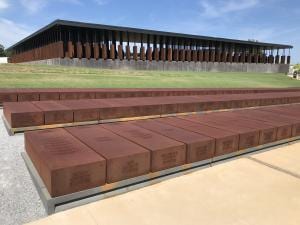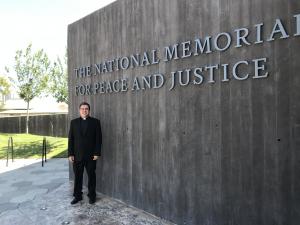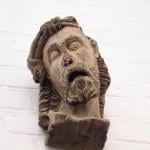I recently visited The National Memorial for Peace and Justice, as well as The Legacy Museum: From Enslavement to Mass Incarceration in Montgomery, Alabama. The somber memorial stands in remembrance of over 4,400 African American men, women and children who were lynched between 1877 and 1950 in the United States. These victims were hanged, burned alive, shot, drowned, and beaten to death by white mobs that ignored the rule of law and oftentimes acted in response to fabricated charges. The Legacy Museum tells the story of African Americans through slavery, racial segregation, the terror of lynching, and the racial bias against them that unfortunately still manifests itself in society.
The Equal Justice Initiative (EJI) which built both the memorial and the museum was founded by lawyer Bryan Stevenson in 1989 to provide assistance to the poor, the incarcerated, and the condemned. It now provides legal assistance to innocent death row prisoners, to children prosecuted as adults, and confronts abuse of the incarcerated and the mentally ill. This initiative presents a compelling argument that cannot be overlooked: the racially biased narratives that allowed slavery to flourish for centuries have continued and evolved, manifesting themselves in different ways after the legal abolishing of slavery. Racial segregation and the use of lynching as a means to terrorize and oppress African Americans were the legacy of slavery in the 20th century. After the accomplishments of the Civil Rights Movement in the 1960s, the disproportionate marginalization and mistreatment of people of color is the legacy of slavery today. Changes in legislation do not have the ability to change hearts.
The EJI argues that the criminal justice system remains the institution least impacted by the Civil Rights Movement seen through the presence of racial disparity in its decisions, mass incarceration, and the common presumption of guilt of people of color. For example, a 2014 National Research Council report indicates that all Americans regardless of race use drugs at similar rates, but drug-related arrests of African Americans is three to four times higher than that of whites. A 2017 Pew Research Center study reports that even though African Americans and Hispanics are about 28% of the population, they represent 56% of the incarcerated. The EJI states that one in three black baby boys today is expected to go to jail or prison at some point in his life.
The design of the national monument reflects its purpose: reddish metal rectangular boxes resembling corpses suspended from trees descend from the ceiling, each one representing a county where lynchings have been documented. The name of the county is inscribed on the box, as well as the names of the dead, and the dates of their executions. The result is somewhat unnerving: the journey through the monument is like walking in between hundreds of hanging corpses. They hang as a stark reminder of the evil perpetuated against African Americans.
The monument and museum systematically present historical and contemporary facts to effectively highlight a painful story of racial bias and injustice. They challenge the visitor to become acquainted with the larger narrative of race relations, and how it continues to affect society today. Montgomery was a hub for the slave trade in the 19th century, gave birth to the modern Civil Rights Movement in the 20th, and through efforts such as the Equal Justice Initiative, is becoming a center for justice in the 21st.
Pictures are mine, all rights reserved.















